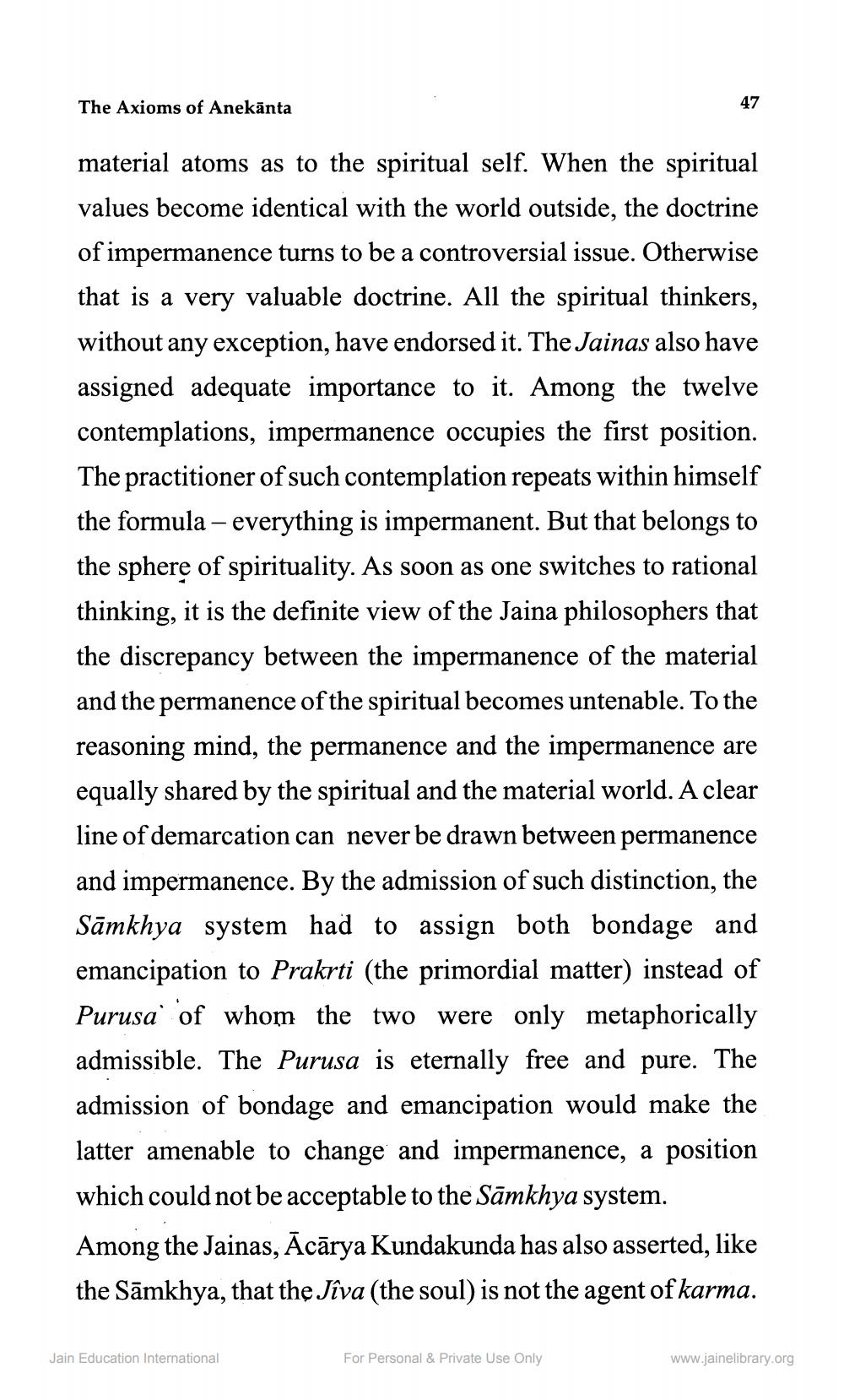________________
The Axioms of Anekānta
47
material atoms as to the spiritual self. When the spiritual values become identical with the world outside, the doctrine of impermanence turns to be a controversial issue. Otherwise that is a very valuable doctrine. All the spiritual thinkers, without any exception, have endorsed it. The Jainas also have assigned adequate importance to it. Among the twelve contemplations, impermanence occupies the first position. The practitioner of such contemplation repeats within himself the formula - everything is impermanent. But that belongs to the sphere of spirituality. As soon as one switches to rational thinking, it is the definite view of the Jaina philosophers that the discrepancy between the impermanence of the material and the permanence of the spiritual becomes untenable. To the reasoning mind, the permanence and the impermanence are equally shared by the spiritual and the material world. A clear line of demarcation can never be drawn between permanence and impermanence. By the admission of such distinction, the Sāmkhya system had to assign both bondage and emancipation to Prakrti (the primordial matter) instead of Purusa' of whom the two were only metaphorically admissible. The Purusa is eternally free and pure. The admission of bondage and emancipation would make the latter amenable to change and impermanence, a position which could not be acceptable to the Sāmkhya system. Among the Jainas, Ācārya Kundakunda has also asserted, like the Sāmkhya, that the Jîva (the soul) is not the agent of karma.
Jain Education International
For Personal & Private Use Only
www.jainelibrary.org




